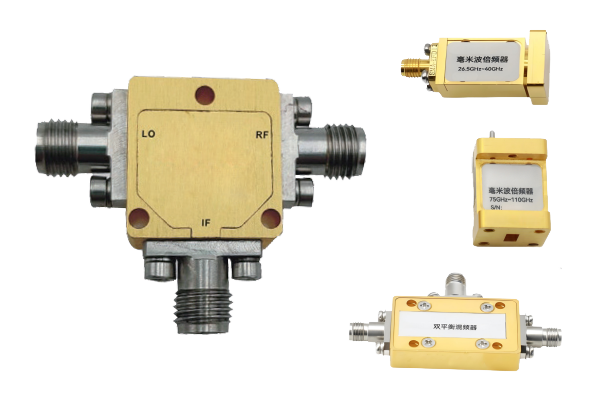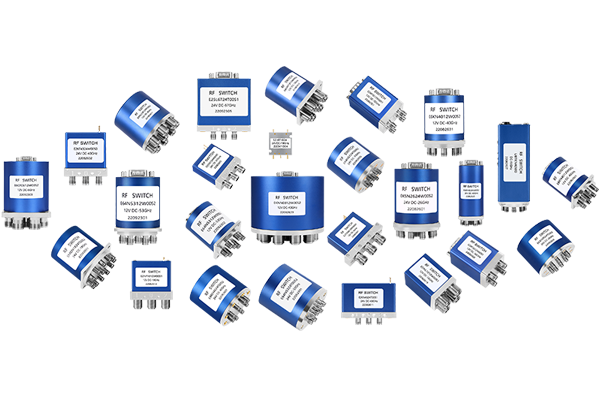cost-competitive ISO-certified distribution-ready pin diode RF switch assembly for defense platforms

Pin diodes now serve as significant elements in high-bandwidth applications owing to their fundamental material and electrical qualities Their ability to operate with fast state changes and low capacitance while maintaining minimal insertion loss fits them to switching modulation and attenuation tasks. The primary process that governs PIN diode switching is the modulation of current by varying the applied bias. The applied voltage modifies the depletion layer thickness at the p–n interface thus affecting conductivity. Varying the bias voltage facilitates reliable high-frequency switching of PIN diodes with small distortion penalties
In designs requiring accurate timing control PIN diodes are integrated into refined circuit architectures They operate within RF filter topologies to control the passing or blocking of chosen frequency bands. Their capability to tolerate high-power signals allows deployment in amplifiers power dividers and generator equipment. Smaller, more efficient PIN diodes have expanded their application scope in wireless communications and radar technologies
Designing Coaxial Switches for Optimal Performance
Coaxial switch engineering is a complex undertaking requiring careful attention to multiple interacting factors Coaxial switch effectiveness depends on the switch kind frequency of operation and insertion loss metrics. Coaxial switch optimization emphasizes low insertion loss combined with high interport isolation
To analyze performance one must evaluate metrics such as return loss insertion loss and isolation. These metrics are commonly measured using simulations theoretical models and experimental setups. Reliable operation of coaxial switches demands thorough and accurate performance analysis
- Coaxial switch analysis typically employs simulation tools, analytical techniques and experimental procedures
- Coaxial switch behavior is sensitive to temperature, impedance mismatch and assembly tolerances
- Contemporary advances and emerging developments in coaxial switch engineering seek improved metrics with smaller size and reduced power
Design Strategies for Low Noise Amplifiers
Achieving high LNA performance efficiency and gain is critical for exceptional signal fidelity in many use cases This calls for deliberate active device selection bias strategies and topological design choices. Effective LNA designs minimize internal noise and maximize clean signal gain with little distortion. Analytical modeling and simulation utilities are key to predicting how different design options influence noise behavior. The goal is to minimize Noise Figure, reflecting the amplifier’s proficiency in maintaining signal relative to added noise
- Device choice focusing on minimal intrinsic noise characteristics is paramount
- Establishing proper bias conditions with optimal settings minimizes noise within transistors
- Circuit layout and topology have substantial impact on noise characteristics
Tactics like impedance matching noise mitigation and feedback regulation advance LNA performance
RF Signal Routing with Pin Diode Switches

Pin diode based switches enable adaptable and effective RF signal routing in various use cases These semiconductors can be rapidly switched on or off allowing dynamic path control. The low insertion loss and high isolation of PIN diodes help maintain signal integrity during switching. They are applied in antenna selection circuits duplexers and phased array antenna systems
Control voltages alter the diode resistance which in turn dictates switching operation. When off or deactivated the diode exhibits high resistance effectively blocking RF energy. The application of a positive bias reduces device resistance and permits RF passage
- Moreover PIN diode switches combine quick transitions low consumption and compact form factors
Different architectures and configurations of PIN diode switch networks enable complex routing capabilities. Arranging multiple switches in networked matrices enables flexible routing and dynamic configuration
Coaxial Microwave Switch Performance Evaluation

Rigorous evaluation and testing of coaxial microwave switches are key to confirming dependable operation in electronics. Several influencing factors such as insertion reflection transmission loss isolation switching speed and frequency range determine performance. A full evaluation process measures these characteristics under various operating environmental and test conditions
- Additionally the evaluation should incorporate reliability robustness durability and capacity to handle severe environmental conditions
- Finally the result of robust evaluation gives key valuable essential data for choosing designing and optimizing switches to meet specific requirements
Extensive Review on Minimizing Noise in LNA Designs
LNA circuits play a crucial role in wireless radio frequency and RF systems by boosting weak inputs and restraining internal noise. This survey offers an extensive examination analysis and overview of approaches to minimize LNA noise. We investigate explore and discuss chief noise sources including thermal shot and flicker noise. We additionally survey noise matching feedback circuit methods and optimal biasing approaches to reduce noise. It presents recent developments like new semiconductor materials and fresh circuit architectures that lower noise figure. Providing comprehensive insight into noise management principles and approaches the article benefits researchers and engineers in RF system development
Applications of Pin Diodes in High Speed Switching Systems

They possess unique remarkable and exceptional qualities beneficial for high speed switching Minimal capacitance and low resistance support rapid switching speeds for applications needing accurate timing. Their proportional voltage response enables controlled amplitude modulation and reliable switching behavior. Their adaptability flexibility and versatility qualifies them as suitable applicable and appropriate for broad high speed uses Applications span optical communication systems microwave circuits and signal processing hardware and devices
IC Coaxial Switch and Circuit Switching Advances
Integrated coaxial switch IC designs improve signal routing processing and handling across electronic systems circuits and devices. The ICs are designed to direct manage and control coaxial signal flow offering high frequency operation and reduced propagation insertion latency. Miniaturization through IC integration results in compact efficient reliable and robust designs fit for dense interfacing integration and connectivity scenarios
- By carefully meticulously and rigorously applying these approaches designers can realize LNAs with outstanding noise performance enabling sensitive reliable electronic systems With careful meticulous and rigorous execution of these strategies designers can obtain LNAs exhibiting excellent noise performance for sensitive reliable systems By rigorously meticulously and carefully implementing these techniques practitioners can achieve LNAs with remarkable noise performance for sensitive reliable electronics By meticulously carefully and rigorously applying coaxial switch these methods developers can produce LNAs with superior noise performance enabling sensitive reliable electronics
- Applications cover telecommunications data networking and wireless communication systems
- Aerospace defense and industrial automation represent important application areas
- Consumer electronics A V devices and test measurement apparatus make use of IC coaxial switch technologies
mmWave LNA Engineering Considerations

Designing for mmWave requires accounting for high attenuation and pronounced noise effects. Parasitic elements such as capacitance and inductance dominate performance at mmWave so layout and component selection are critical. Controlling input match and achieving high power gain are critical essential and important requirements in mmWave LNA design. Choice of active devices such as HEMTs GaAs MESFETs or InP HBTs is crucial to reach low noise figures at mmWave. Moreover additionally moreover the design implementation and optimization of matching networks is vital to ensure efficient power transfer and impedance match. Accounting for package parasitics is important since they can significantly affect LNA performance at mmWave. Using low loss transmission lines and thoughtful ground plane designs is essential necessary and important for minimizing reflection and keeping high bandwidth
Characterize and Model PIN Diodes for RF Switching Applications
PIN diodes operate as essential components elements and parts in diverse RF switching applications. Accurate precise and detailed characterization is critical for designing developing and optimizing reliable high performance circuits using PIN diodes. This requires analyzing evaluating and examining electrical properties including voltage current resistance impedance and conductance. Their frequency response bandwidth tuning capabilities and switching speed latency or response time are likewise measured
Moreover additionally the crafting of accurate models simulations and representations for PIN diodes is essential crucial and vital for predicting RF behavior. A range of modeling approaches including lumped element distributed element and SPICE models are used. Which model simulation or representation to use depends on the particular application requirements and the expected required desired accuracy
High End Approaches for Low Noise Amplifier Design
LNA engineering calls for careful topology and component selection to meet stringent noise performance goals. Recent emerging and novel semiconductor advances have opened the door to innovative groundbreaking sophisticated design techniques that cut noise significantly.
Notable techniques include employing utilizing and implementing wideband matching networks incorporating low-noise transistors with high intrinsic gain and optimizing biasing schemes strategies and approaches. Additionally advanced packaging and thermal management practices are critical for minimizing external noise influences. With careful meticulous and rigorous deployment of these approaches developers can accomplish LNAs with outstanding noise performance enabling trustworthy sensitive electronics
